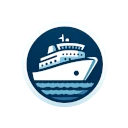- W.B. Yeats Built by Flensburger Schiffbau-Gesellschaft in Germany and launched in 2018, the W.B. Yeats can accommodate approximately 1,800 passengers and has 440 cabins. It offers 2,800 lane meters for vehicles, powered by engines producing up to 33,600 horsepower. This allows it to cruise smoothly across the Irish Sea with a service speed of 22 knots, primarily on the Dublin to Holyhead and Dublin to Cherbourg routes.
- Ulysses Regarded as one of the largest car ferries worldwide, Ulysses was introduced in 2001 and serves the Dublin to Holyhead route. It has a passenger capacity of 2,000 and 1,342 lane meters for vehicles. The vessel’s engines generate a total power output of 31,200 horsepower, facilitating a cruising speed of 22 knots. Ulysses is renowned for its reliability and extensive onboard facilities.
- Dublin Swift The high-speed craft Dublin Swift, operates between Dublin and Holyhead. Built in 1999, it significantly reduces crossing time, thanks to its powerful engines that deliver 20,000 horsepower, achieving speeds of up to 35 knots. With a capacity for 800 passengers and 200 cars, it offers fast and efficient crossings.
- Isle of Inishmore Plying the waters between Dover to Calais, the Isle of Inishmore is a vital link in Irish Ferries’ network. Built in 1997, it accommodates up to 2,200 passengers and provides 2,260 lane meters for cargo. The ship’s creates power output of 31,500 horsepower, ensuring a stable cruising speed of 22 knots even in challenging sea conditions.
- Isle of Innisfree Launched in 2021, serves routes between Ireland and Britain, accommodating 1,800 passengers and offering 2,800 lane meters for cargo. Powered by 27,500 horsepower, it cruises at a comfortable speed of 22 knots.
- Isle of Inisheer The latest addition in 2024, connects the same routes with facilities for 1,500 passengers and 2,500 lane meters for cargo, achieving a cruising speed of 21 knots with a power output of 25,000 horsepower. Both ships are equipped with modern amenities and advanced stabilizing technologies, ensuring a smooth and efficient journey across the Irish Sea.
Europe by ferry guide
About the ferries world.
